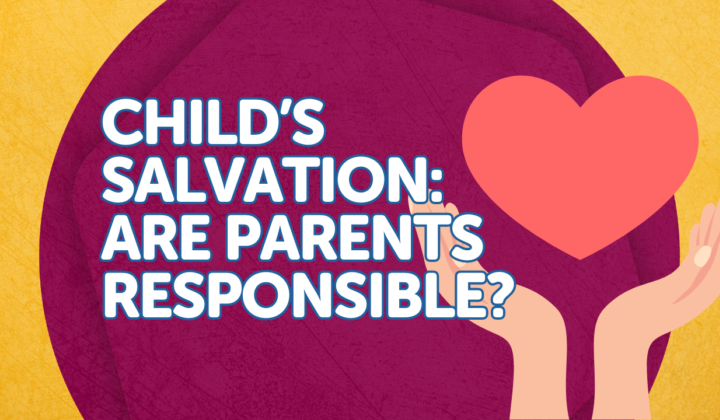Learn more about the journey that led to us equipping kids to carefully evaluate every idea they encounter.
Meet members of our team who have contributed to curriculum development.
Hear from real users of the Foundation Curriculum.
Learn what we believe about God, Jesus, Scripture, and more.
Creative Ways to Make Homeschooling More Fun
Welcome to the Foundation Worldview Podcast, where we answer your questions to help you equip the children God has placed in your care to carefully evaluate every idea they encounter and understand the truth of the biblical worldview.
Today's question asks: What are some creative ways to make homeschooling more fun for my children?
Even if you're not homeschooling but sending your children to private or public school, don't tune out! You still play a vital role in your child's education. Let's explore ways to make learning more engaging for children in any educational setting.
What's Our Educational Goal?
Before addressing how to make education more fun, we need to clarify our goal. If we don't know what we're aiming for, we won't reach the target.
Our goal should be to create lifelong learners who love God through learning more about Him and the world He has created.
Loving learning doesn't mean learning always needs to be fun. Often, learning involves hard work, but children can still enjoy that work when they understand the ultimate purpose. Make this goal clear to your children: you want them to become people who love learning throughout their lives, and through that learning, grow in their love for God.
Aligning Instruction with God's Design
To help our children love learning, we should align our instruction with God's design for them. Here are four specific ways to do this:
1. Involve Movement in Learning
God designed children's bodies with a need for movement, and they learn better when physically engaged. Think about learning a skill like bread baking—would watching a hundred videos help more than watching one or two and then practicing repeatedly? Clearly, hands-on practice is essential.
Children need regular movement throughout the day. If you're homeschooling, ensure your children have multiple periods of free play and outdoor activity daily. If your children attend school, make sure they have plenty of physical activity after school hours.
You can also incorporate movement directly into academic learning:
- Math Facts: When I taught in a classroom, I used foam hopscotch sets where students would throw tokens on numbers, hop around them, and recite the corresponding math fact when they reached the end. You can create a similar activity with sidewalk chalk in your driveway. Or have your children do jumping jacks while rhythmically reciting math facts.
- Spelling: Make spelling tactile! I used sand trays—cafeteria trays with colored sand spread across them. Students would spell words with their fingers in the sand while saying them aloud. The nerve endings in their pointer fingers formed the letters, encoding the words in their brains. You can easily replicate this at home. Another option is using shaving cream spread on a desk surface for the same purpose.
2. Engage Their God-Given Interests
God has designed our children with specific gifts, talents, and interests—we should lean into these areas. This doesn't mean we only focus on what they're naturally gifted in; they also need to be stretched in other areas. But we should certainly nurture their natural interests.
- Allow them to choose books about topics they're passionate about. If your child loves trains from the 1800s, find library books on that subject. I once had a student obsessed with Japan, so I encouraged him to select books about that country during library visits.
- If your child has a particular interest in a science area, let them study it more frequently, create reports, or develop projects around it.
- For children interested in cooking, incorporate fractions by having them double recipes: "This calls for 1⅓ cups of flour. If we're doubling the recipe, how many cups will we need? That's right, 2⅔ cups."
- For children who enjoy building, work on projects around the house and incorporate measurement. I often shared with my students how my landlord once measured incorrectly when installing a bathroom countertop, and the stone slab ended up covering both the sink and toilet!
3. Capitalize on Their Natural Creativity
God has given children wonderful imaginations. When imagination doesn't naturally develop, it's often because excessive screen time has prevented them from developing visualization skills. We should encourage imaginative growth through learning.
- For math practice, create imaginary shopping scenarios where they add up grocery costs.
- When I taught about the Underground Railroad, I created a culminating project where students used their creativity to implement what they had learned. I provided a map of a plantation and character backgrounds, and students had to develop an escape plan using their knowledge of the Underground Railroad.
- For vocabulary lessons, I'd have students develop skits incorporating all their vocabulary words correctly rather than taking traditional tests. They loved this creative approach!
4. Give Them Responsibility
As image bearers of God, we're tasked with filling the earth and subduing it. This means we have a God-given need to exercise responsibility over different parts of creation. Children are more engaged and enthusiastic when given responsibility for their learning.
- Rather than simply telling them what to know, give them opportunities to learn and then teach you or a sibling what they've learned.
- When teaching the novel "Farmer Boy" (which, honestly, isn't the most thrilling story), I placed students in literature circles with different responsibilities. They had to present specific elements to their group, which transformed an unengaging novel into something exciting because they had teaching responsibility.
- I also involved my third-graders in a program where we visited a bilingual kindergarten class. I was always amazed at how my most challenging students became model students when responsible for helping younger children.
Recap
To make learning more engaging for your children:
- Involve movement in their learning
- Engage their God-given interests
- Capitalize on their natural creativity
- Give them responsibility
If you're interested in more guidance on homeschooling or the learning process at home, check out our Teaching Tips series at Foundation Worldview. We have an entire YouTube playlist of teaching tips available for you.
Closing Thoughts
As we conclude, my prayer is that no matter the educational situation for you and the children God has placed in your care, you would trust that God is working all things together for your good, using every circumstance to conform you more into the image of His Son.
Don't Miss Out on More Homeschooling Wisdom! Subscribe to our email list today and receive weekly teaching tips, creative learning activities, and biblical worldview resources delivered straight to your inbox. As a homeschooling parent or someone invested in your child's education, you'll gain practical strategies you can implement immediately. Join our community of parents committed to raising lifelong learners who love God through discovering His world. I'll see you next time!
Related Posts and insights

Helping Kids Find Assurance of Salvation
Help your child overcome fears about salvation. Learn how to ask the right questions, share key Scriptures, and guide them to true assurance in Christ.

Are Parents Responsible for Their Child's Salvation?
Today's question says, "Am I responsible for my children's salvation? I get very contradicting messages from people. My pastor says it's God's responsibility, but I can't shake the feeling that I will answer God for what my children choose at the end of the day."

Helping Kids Understand Revelation Without Fear
"Wondering how to talk to your kids about the end times and Revelation? Elizabeth Urbanowicz shares biblical guidance for equipping children without fear.



